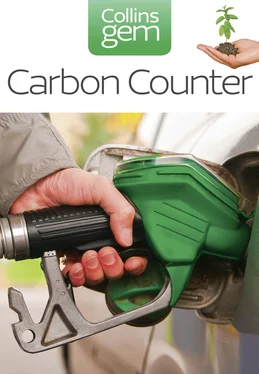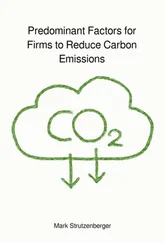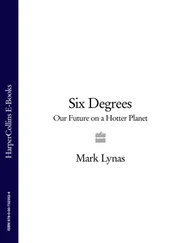Tip:If you think about it, all the energy humans have ever used has come from the sun. Cavemen burned wood in fires for heat and cooking, but the trees it came from used the sun’s energy.
CO2 AND ESTIMATED GLOBAL AIR TEMPERATURE
Ice cores drilled by glaciologists from Antarctica provide a good record of temperature and greenhouse gas fluctuations over the ages. Two things are striking: first, how closely correlated temperature and CO 2are; and second, how much higher levels are now than during the whole period of record.
energy subsidy from the past. Before the discovery of coal, oil and gas, humans – like other animals and plants – had to live only from the energy provided directly by the sun.
Coal:Coal is the fossilized remains of ancient forests. Many of these forests built up thick layers of peat underneath them, much as do forests today in hot tropical areas like Indonesia. Over millions of years, this peat became compressed by layers of sediment above it, and turned gradually to carbon-rich coal. A prime coal-forming era was the Carboniferous period (300–360 million years ago), which was named after the extensive coal beds found in Western Europe. Most of the electricity produced worldwide comes from coal.
Oil:Unlike coal, oil begins its formation in the sea. The dead remains of plankton accumulate in bottom sediments, where they are eventually buried at great depths and heated up by geothermal processes. This then ‘cooks’ the dead algae, releasing hydrocarbons, which companies such as Esso and BP later hope to drill out from reservoirs of oil trapped between impermeable rocks. If the oil is cooked at too high a temperature, it instead forms gas (see page 15). Saudi Arabia and Iraq have the largest proven oil reserves on the planet. Their oil was mostly formed during the Jurassic era, 200–145 million years ago. An incredible 80 million barrels of oil are consumed by humanity each day – that’s nearly a thousand barrels per second.
SOURCES OF GREENHOUSE GASES
Carbon dioxide: mainly produced by the combustion of coal, oil and gas from fossil fuels. Also results from deforestation and land clearance, and from peat burning in the tropics.
Methane: produced in places where oxygen-free decomposition occurs, such as in rice paddies and landfill sites. Can also be released by leaky pipelines and burping cows.
Nitrous oxides: emitted from burning fossil fuels – in car exhausts, for example – and from agricultural fertilizers breaking down in the soil.
HFCs and other industrial gases: as it says, these are produced by industrial processes. HFCs were introduced as replacements for CFCs, which are now banned to protect the ozone layer. They are used in refrigerants, in aerosols and foam-blowing. SF 6is used in high-voltage electrical switches, but also in that squishy bit of some training shoes, and inside tennis balls.
Gas: Much natural gas is overcooked oil, which is why oil and gas fields tend to be so closely associated. Some of the biggest gas fields lie in the Middle East and Russia. Gas is mostly transported via pipelines, though it can also be liquefied under high pressure and transported on ships. In its natural state, gas is odourless – small amounts of additives are included in the mixture in order to give it a characteristic smell, useful in detecting leaks. Leaked gas accumulating in buildings can cause deadly explosions.
There is no longer any serious scientific doubt that global warming is already under way. The earth is now 0.7°C warmer than it was 150 years ago, before the Industrial Revolution began to change the amount of greenhouse gases in the atmosphere. The graph on page 16 shows how air temperatures have risen since 1850. You can see that the rise has not been uniform, but has come in two distinct blips – between 1910 and 1940, and between 1970 and today. This begs the question of why temperatures stabilized, and even cooled slightly, after the Second World War, when emissions of carbon were rising rapidly. Scientists think that the culprit may have been another pollutant, sulphur dioxide, which acts to counteract warming by reflecting some of the sun’s heat. Thus ‘global dimming’ counteracted ‘global warming’, and the two forms of pollution to a certain extent cancelled each other out. Sulphur dioxide is now produced less, however, because it causes acid rain and has nasty effects on people’s health.
GLOBAL AIR TEMPERATURE 2005 ANOMALY +0.48°C (MEAN 1961–1990)
Tip: Sulphur dioxide was one of the main pollutants in the choking London ‘pea souper’ smogs of the 1950s, which were controlled by the Clean Air Act of 1956. It was produced as a by-product of burning fossil fuels (especially coal), because of small amounts of sulphur contaminating the fuel. Low-sulphur diesel is manufactured specially to reduce sulphur dioxide emissions.
FIVE HOTTEST YEARS IN DESCENDING ORDER
Global warming impacts so far
Sea levels are rising at about 3mm per year, faster than during the whole of the last one hundred years. People in Pacific island nations like Tuvalu are already planning to leave their homelands, while cities like New York and London are threatened by rising tides.
Mountain glaciers are retreating worldwide, from the Alps to the Andes. The Alps have lost half their glacier cover since 1850. In the Andes, the melting glaciers mean that essential freshwater supplies will soon be lost for ever.
Snow cover in northern areas is decreasing, and permafrost in the Arctic is melting, causing damage to buildings and roads in Alaska and Siberia.
The melting icecap on the Arctic Ocean is affecting animals that depend on it. Polar bears have been left without ice to rest on, and some have drowned while trying to swim long distances. Walruses have tried to climb into white fishing boats, mistaking them for the ice floes that have disappeared.
Both Greenland and Antarctica are losing ice mass; Greenland now loses 250 cubic kilometres of water each year, adding to sea level rise.
Major floating ice shelves have collapsed in Antarctica. The latest was Larsen B, which fell apart spectacularly in a few days in 2002, much to the shock of watching scientists.
Droughts have increased around the world, as has the incidence of heavy rainfall, due to the speeding up of the water cycle with more energy in the atmosphere. In Mumbai, during the 2005 monsoon, nearly a metre of rain fell in a single 24-hour period (the highest total ever), killing 750 people with the resulting floods.
Hurricanes and typhoons are getting stronger, with heavier rainfall and more destructive winds. Hurricane Katrina, which devastated New Orleans,
Tip: Hurricanes get their energy from the heat of the oceans, which evaporate their water into the swirling clouds that make up these terrifying storms. So as the oceans get hotter because of global warming, hurricanes have more ‘rocket fuel’ to boost their power.
was one of the strongest Atlantic storms ever observed. Half a million people have still not returned to the ruined city, and are considered ‘climate refugees’ by some scientists.
Heatwaves have also increased in frequency and intensity. In 2003, severe heat killed up to 30,000 people across Europe. In Paris, morgues were over-flowing with the corpses of elderly people, and some had to be stored in vegetable cooling warehouses.
GLOBAL WARMING OVER THE NEXT 100 YEARS
How severe global warming gets depends mostly on how far humanity lets greenhouse gases continue to spiral upwards – and that’s where this book comes in. The Intergovernmental Panel on Climate Change, the main scientific body on this issue, states that temperatures will increase by 1.4°C to 5.8°C over the next hundred years. The key uncertainty here is not how the atmosphere will behave, but how humans will behave. Will seven or more billion humans continue to seek fossil fuel-hungry lifestyles, with cars, aeroplanes and all the rest? Or will they develop cleaner energy sources and tread more lightly on the planet? There is no clear answer to this yet – indeed the ultimate answer will depend on decisions made by each and every one of us, including you.
Читать дальше

![Carbon - Девушка с Косой [СИ]](/books/427728/carbon-devushka-s-kosoj-si-thumb.webp)










